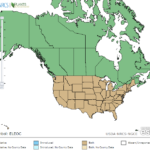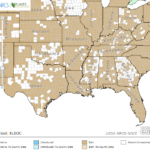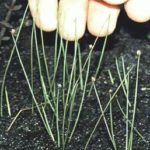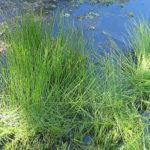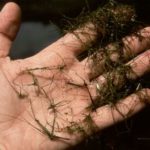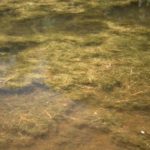Eleocharis spp.
USDA, NRCS. 2018. The PLANTS Database (http://plants.usda.gov, 28 March 2018). National Plant Data Team, Greensboro, NC 27401-4901 USA.
Illustration courtesy of University of Florida/IFAS Center for Aquatic and Invasive Plants. Used with permission.
What is Spikerush?
Physical Characteristics
Leaves:
- Bladeless sheaths
- Arranged in spirals
- Closely crowded
- Various textures
- Always spherical
Flowers:
- One flower/cluster of flowers
Fruit:
- One seed
- Does not open to release seed when ripe
- Flat or slightly bulging
- Various shapes, colors, and textures
Pros and Cons of Spikerush
Ducks, geese, muskrats, and nutria all eat portions of spike rushes, from seeds, to rhizomes and tubers. Submerged portions of all aquatic plants provide habitats for many micro and macro invertebrates. These invertebrates in turn are used as food by fish and other wildlife species (e.g. amphibians, reptiles, ducks, etc.). After aquatic plants die, their decomposition by bacteria and fungi provides food (called “detritus”) for many aquatic invertebrates.
What Type of Spikerush Do I Have?
There are many species of spikerush and they are difficult to identify without using detailed botanical keys. In Texas, there are four common species of spikerush. Click on the buttons to learn more about each individual species.
